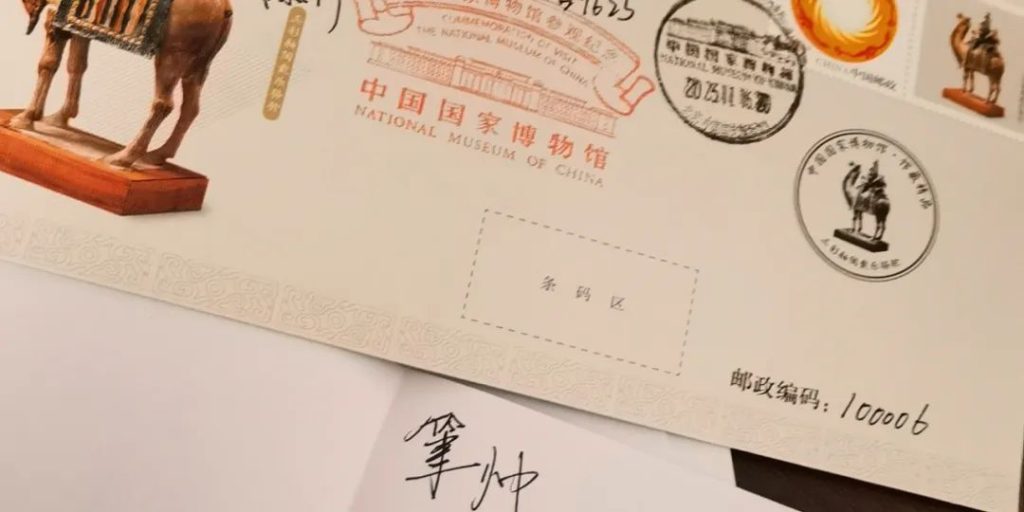一
灯下看《王又曾集》。手机忽然传来会婷的信息,说是过几天她从京城来穗,与我一道共检茶经。记得好几年前,她来过我工作室,聊及准备赴日留学,进修幼儿教育。她一贯果毅而深思,虽然我和她鲜少晤会。我说,我们无非有几个晨暮与春秋,能有机会求己所好,那当然是好事。当时隐约知悉,她已有辞行的意思。人生良会,不可多得,负笈远行,此后霜雪载途,渺然烟树,罔罔有感于中。然而突罹疫情,会婷的赴日之行,权暂搁置。会婷说,上次我们会面,是2019年7月2日。我说,你记得真准,我还以为更早一些时。她发给我一张截图,那是2019年7月2日她发的一则朋友圈。我从书柜搜出一本《弄潮儿》,也是上次见面她送我的。翻开扉页,有她的签字,落款日期与她的记忆无误。禁不住似水流年,逃不过此间少年,时间瘦得就像我的钱囊,总不经用。于是总归免不了透支,代价便是双鬓霜前,每一临镜,星星先见。
在京期间,她说给我寄一张明信片,并拍了照片发给我,上面写着几行字:“北平的秋天,遍地金黄,最是浪漫银杏飘落时”,笔迹飘逸又清秀,见字如面,一点也不假。在神话与现实之间,灼灼金子,不可方物。我问,怎么没有拣一枚银杏寄给我么?会婷道:“美得令人窒息,一窒息,啥也忘了,不过我给慕哥带了茶。”寄银杏叶云云,自然是玩笑。我问,这明信片寄出了么?她道,早在一周前寄了。我算了一下日子,怕是遗落途中,至今我仍未收到。山程水程,长亭短亭,望极烟迷水曲,星稀月黑之际,谁也不知这张明信片有过什么样的经历,自此东西南北,燕踪鸿迹。
二
巴以冲突正酣,某些朋友问我对此的看法。我不喜议论,便彩铅画了一幅画:大山之麓,江河之滨,一间小屋于山下,门前留一片空地,再题了高适的两句诗:夕阳连积水,边色满秋空。朋友不明所以。其实我是仿绘丰子恺的原作,丰子恺原作的标题是“天涯静处无征战,兵气销为日月光”,语出常建,唐朝人。唐朝那年正值安史之乱,百姓流离,诗人希望朝廷能和少数民族政权化干戈为玉帛。天涯静处即辽阔而安静的边远之地,当那里的战争阴霾散尽,日月的光华便可以照彻寰宇。到了丰子恺的那个年代,依然还是宫阙万间都做了土,日寇来袭,丰子恺不得不颠沛辗转,“天涯静处”成了心中极奢侈的愿望。不料会婷看后便嚷着给她画一幅,择日亲自过来取。
腹案打了两天,画了一幅《相逢意气为君饮,系马高楼垂柳边》。江河逶迤,两岸山峦崔巍,一株粉杏倒映;山脚一处楼台,朱栏黛瓦,楼下绿柳如烟。楼台有两人坐着,举樽对饮。想来他们间别多年,一旦重逢,其间为顺、为逆、为通、为塞、为梦寐,说到尽兴处,如泉鸣谷应,如风起波兴。这当然是我的痴想,画是我画的,画中这两人却未必作我所想。
三
在京城脚下转悠之前,会婷游历了一趟张掖。她偶然眺瞻,塞鸿秋影,客舍青青,到了夜深,风一更,雪一更,或许她一个转身,一篇盛大的散文,化成一阕正恁凝愁的八声甘州。当癸卯年的十月十一见到她时,征衫犹带烟尘,略显倦色,而眸子炯然。她递给我一盒茶,说银杏叶没捎上,茶可是有的。我笑她自由身可贵,周游列国。她说,我裸辞了,才有这么任性。原先她在一家企业任职,深得上级赏识,然而其中人事纷营,忧愁之感,忽从中来,便果断离职,游历了西北一带,借一借大漠风沙,涤一涤止水的心境。在赴日留学之前,会婷曾主修过幼儿教育,并颇有心得,有一年她从事一家教培机构,利用她的教育理念把这家机构带上了轨道,实现了盈余,更令她感到愉悦的,是能够与小朋友一起玩耍。一份可以唤醒和感染其他人的工作,是她始终所喜的。驰世味之乐,不如反本归根。诚然,教育是伟大的,但教育也是得接受平庸的。
我记得前不久,有一位校长跟我闲谈。他说,近日东莞与郑州的两位老师轻生跳楼,我感觉我坐校长位置一天,就增一天的愧疚。语短情哀,意悲而远。我一时无从抚慰,只道,别这样,您其实做得很好,缝缝补补当不易…他突然打断我的话:对,缝缝补补,这是你给我最大的褒奖。
四
每年我的生辰,会婷都会给我寄书,说这个仪式不能少。我惭愧得紧,毕竟虽然做书这么多年,却成就寥寥。一代有一代之宿命,一人有一人之性情,混迹此间,工余闲读几句,仅求此一刻的快意。今年会婷赠我一本《南村辍耕录》,扉页有其签字:偶然相聚,最是人间堪乐处,于道各努力,千里自同风。《辍耕录》的作者南村先生一生无意功名,教书育人,洒脱不凡。明太祖召他做官,他托疾固辞。那是明太祖多事了。忽然忆起会婷给我寄的那枚明信片,假如收到,那现下应该夹在《辍耕录》里了。
END




